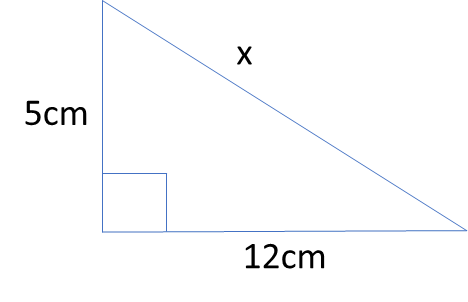What does the Pythagoras theorem explain?
The Pythagoras theorem tells us that if the sides of a right angled-triangle or right triangle are squares, the area of the biggest square is the same as the sum of the area of the two smaller squares.
 An image illustrating the relationship between squares and a right triangle, Njoku - StudySmarter Originals
An image illustrating the relationship between squares and a right triangle, Njoku - StudySmarter Originals
 An image using squares to prove the Pythagoras theorem, Njoku - StudySmarter Originals
An image using squares to prove the Pythagoras theorem, Njoku - StudySmarter Originals
So, the area of the biggest square equals the sum of the areas of both smaller squares;
This is what the Pythagoras theorem explains.
Therefore, the Pythagoras theorem states that when a triangle has one of it angles equal to 90 degrees, then the square of the longest side equals the sum of the squares of the two other sides.
The longest side is called the hypotenuse, the vertical side is called the opposite and the horizontal side is called the adjacent.
 An illustration on the sides of a right triangle, Njoku - StudySmarter Originals
An illustration on the sides of a right triangle, Njoku - StudySmarter Originals
So the formula of the Pythagoras theorem is;
Find the value of x in the figure below;

Using Pythagoras theorem, we can see that our opposite and adjacent is given but out hypotenuse is given as x. Thus;
Find the square root of both sides
If a right angled triangle has equal dimension in two of it sides and the longest side measures 8cm. Find the other sides.
Solution.
From the question our hypotenuse is given as 8cm. However, the opposite and adjacent are not given. Also, we are told opposite = adjacent.
let the adjacent = y; that means opposite = y. Therefore:
Using pythagoras theorem,
Divide both sides by 2
Find the square root of both sides of the equation
So the opposite is 4√2cm and the adjacent is 4√2cm.
If sinØ = 2/5, Find cosØ and tanØ.
Solution
This means that the opposite is 2 and the adjacent is 5. Meanwhile, we need to find the adjacent:
Subtract 4 from both sides of the equation.
Take the square roots.
Now, we have values for all sides.
Rationalize by multiplying the denominator and numerator by √5.
What is the Pythagorean triple?
A Pythagorean triple consists of 3 sets of numbers which prove correctly the Pythagoras theorem. This means that the square of the highest number among this numbers must be equal to the sum of the squares of the other two numbers in the set.
Determine if the following is a Pythagorean triple.
1. 7, 12 and 5
2. 8, 15 and 17
Solution
1. To confirm if the series 7, 12 and 5 are Pythagorean triples, take the square of the largest number.
The largest number is 12 and its square is 144.
You should sum the squares of the other two numbers in the series.
the square of 7 is 49
the square of 5 is 25
49+25 = 74
This means that the series 7, 12 and 5 is not a Pythagorean triple.
2. To confirm if the series 8, 15 and 17 are Pythagorean triples, take the square of the largest number.
The largest number is 17 and its square is 289.
You should sum the squares of the other two numbers in the series.
the square of 8 is 64
the square of 15 is 225
64+225 = 289
This proves that the set 8, 15 and 17 is a Pythagorean triple.
Pythagoras Theorem - Key takeaways











